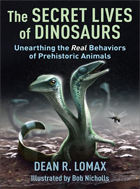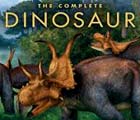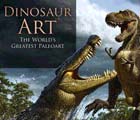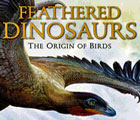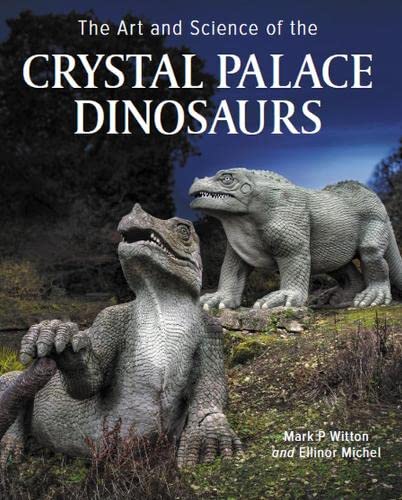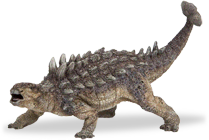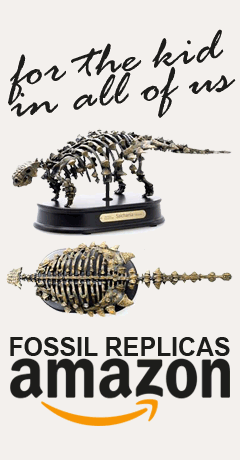Pronunciation: ang-KI-lo-SOR-uh-day
Author: Barnum Brown
Year: 1908
Meaning: Stiff lizards (see etymology)
Locomotion: Quadrupedal (four legs)
Synonyms: Syrmosauridae (Maleev, 1952)
Author: Barnum Brown
Year: 1908
Meaning: Stiff lizards (see etymology)
Locomotion: Quadrupedal (four legs)
Synonyms: Syrmosauridae (Maleev, 1952)
[Sereno 1998]Definition
The most inclusive clade containing Ankylosaurus magniventris but not Panoplosaurus mirus.
About
Ankylosaurids are the heavy duty ankylosaurs: the heavily armoured, heavily armed and just plain old heavy thyreophorans, aka "shield bearers".
Gargoyleosaurus parkpinorum from the Kimmeridgian-Tithonian-aged Morrison Formation is the oldest and smallest ankylosaurid, while Ankylosaurus magniventris, the group mascot from the Maastrichtian of Montana, Alberta and possibly Wyoming, is the youngest but largest.
Click here to search Dinochecker for ankylosaurids.
Stiff LizardsEtymology
Brown never provided an intended meaning for the name, but the closest derivation for Ankylosaurusidae is "ankulos" (Greek: bent, crooked), "sauros" (Greek: lizard), and "idae" (Greek: family), which could be a reference to the "highly arched body cavity" of the founding member Ankylosaurus, similar, Brown thought, to that of Stegosaurus. However, he also referred to "skull plates coossified in a continuous sculptured shield", "rigid body frame" and "backbone stiff", which suggests he was thinking "ankylosis"—a medical term describing the stiffening of joints caused by bone fusion. The latter—stiff or fused lizards—is the popular choice.
Relationships
References
• Brown B and Kaisen PC (1908) "The Ankylosauridae, a new family of armored dinosaurs from the Upper Cretaceous". American Museum of Natural History Bulletin, 24(12): 187—201.
• Coombs Jr WP (1995) "Ankylosaurian tail clubs of middle Campanian to early Maastrichtian age from western North America, with description of a tiny club from Alberta and discussion of tail orientation and tail club function". Canadian Journal of Earth Sciences, 32(7): 902-912. DOI: 10.1139/e95-075.
• Carpenter K (2001) "The Armored Dinosaurs".
• Vickaryous MK, Maryanska T and Weishampel DB (2004) "Ankylosauria". Page 363–392 in Weishampel, Dodson and Osmólska (eds.) "The Dinosauria: Second Edition".
• Fastovsky DE and Weishampel DB (2012) "Dinosaurs: A Concise Natural History".
• Kirkland JI, Alcalá L, Loewen MA, Espílez E, Mampel L and Wiersma JP (2013) "The basal nodosaurid ankylosaur Europelta carbonensis n. gen., n. sp. from the Lower Cretaceous (lower Albian) Escucha Formation of northeastern Spain". PLoS ONE 8(12): e80405. DOI: 10.1371/journal.pone.0080405.
• Stein MM, Hayashi S and Martin SP (2013) "Long Bone Histology and Growth Patterns in Ankylosaurs: Implications for Life History and Evolution". PLOS ONE, 8(7): e68590. DOI: 10.1371/journal.pone.0068590.
• Arbour VM (2014) "Systematics, evolution, and biogeography of the ankylosaurid dinosaurs". University of Alberta Libraries: Education and Research Archive. PhD thesis. DOI: 10.7939/R31N7XW06
• Arbour VM and Currie PJ (2015) "Ankylosaurid dinosaur tail clubs evolved through stepwise acquisition of key features". Journal of Anatomy, 227(4): 514–523. DOI: 10.1111/joa.12363.
• Arbour VM and Currie PJ (2016) "Systematics, phylogeny and palaeobiogeography of the ankylosaurid dinosaurs". Journal of Systematic Palaeontology. 14 (5): 385–444. DOI: 10.1080/14772019.2015.1059985.
• Arbour VM, Zanno LE and Evans DC (2022) "Palaeopathological evidence for intraspecific combat in ankylosaurid dinosaurs". Biology Letters, 18(12): 20220404. DOI: 10.1098/rsbl.2022.0404.





